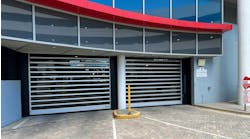Harnessing smart energy retrofits and AI to decarbonize existing office structures
Commercial real estate faces an urgent challenge within the broader context of the climate crisis. The carbon footprint of commercial buildings, including offices, represents a substantial contributor to environmental decline. The need to address this issue is not only pressing but also pivotal in our global efforts to mitigate climate change.
As of 2018, buildings were the largest single contributor to global emissions, accounting for 28% of annual energy-related CO2 emissions. In the United States, there were approximately 5.9 million commercial buildings in 2018, totaling an astounding 96.4 billion square feet of floor space. Of these, 970,000 were office buildings alone, representing a staggering 16.6 million square feet of floor space. What's more, office buildings were identified as the highest energy consumers within the commercial building sector.
It is clear that a critical transformation is required to decarbonize the commercial real estate sector and to align it with sustainable environmental practices. The urgency of this transformation is underscored by the fact that a large proportion of the projected building stock for 2050 is already in existence. This reality emphasizes the importance of not only constructing greener, more energy-efficient buildings but also improving the sustainability of existing structures.
In this quest for sustainable commercial real estate, technological innovations are emerging as a driving force. Artificial intelligence (AI), a versatile tool with demonstrated capabilities in various sectors, is at the forefront of this transformative shift. The adoption of AI within CRE is not just a trend but a necessity.
The significance of retrofitting
Retrofitting, in the context of existing office buildings, refers to the process of upgrading and optimizing a building's energy systems, technology, and infrastructure to enhance efficiency, reduce energy consumption, and decrease its environmental impact. This approach, bolstered by the integration of cutting-edge technologies like artificial intelligence, holds the key to decarbonizing the built environment effectively.
Office buildings stand out as energy-intensive structures due to their substantial heating, cooling, lighting, and ventilation requirements. The enormous energy consumption of office spaces has placed them at the forefront of the decarbonization challenge. To address this issue comprehensively, it's essential to prioritize the energy efficiency of these existing structures.
The intersection of smart energy retrofits and AI
Smart energy retrofits encompass a spectrum of technological solutions aimed at enhancing the energy efficiency and environmental sustainability of office buildings. These retrofits involve equipment upgrades, improvements in building management systems, and the optimization of energy consumption. AI plays an instrumental role in this process. AI-driven systems can analyze data, predict energy consumption patterns, and expertly manage building energy for optimal results. This technology facilitates real-time monitoring and adaptive control of various building systems, ensuring their peak efficiency while minimizing energy waste.The path to a greener future through retrofitting existing office buildings can be divided into several key steps:
- Establish benchmarks: Benchmarks can be set for a building's performance by comparing it to itself over time, to other buildings of the same type, or to models/simulations. These can be established in a variety of ways, such as retro-commissioning, carrying out energy audits, establishing basic energy performance, and participating in Energy Star Portfolio manager and ESG performance assessment programs like GRESB.
- Plan for net zero: Achieving sustainability is a multifaceted journey. To maximize resources for energy savings and carbon reduction, both OpEx and CapEx projects must be considered. Capital improvements, like variable frequency drives (VFDs) and chiller upgrades, require initial investment but yield long-term benefits. Operational strategies, such as AI solutions and improved controls, offer immediate results without major capital outlays. Both elements are essential for a holistic net-zero approach.
- Operate efficiently with existing equipment: Focusing on operational efficiency and implementing strategies such as the Pacific Northwest National Laboratory (PNNL) re-tuning approach can result in significant energy savings. A systematic, data-driven process, re-tuning is designed to identify and address operational inefficiencies and issues, ultimately reducing energy consumption. It relies on granular data collection and is performed in real-time as an ongoing process. For buildings equipped with Building Management Systems (BMS) requiring minimal retro-commissioning, re-tuning can yield energy savings ranging from 5% to 25%, as indicated by PNNL.
- Verify impact: Measure progress to your goals in an ongoing process so you know you are on track or what it will take to get you there.
Decarbonization: A collective responsibility
The path towards a sustainable, decarbonized future for existing office buildings is not one that any single entity can undertake alone. It requires the concerted effort of governments, building owners, corporations, and the construction and energy sectors. Government initiatives and incentives can play a pivotal role in encouraging retrofitting efforts, while building owners and corporations have both a moral and financial imperative to invest in sustainable retrofit projects.
The urgency to decarbonize existing office buildings remains indisputable. Retrofitting these structures with smart energy systems and AI integration charts a course not only towards reduced carbon emissions but also towards the creation of more efficient, cost-effective, and sustainable office spaces. As we navigate the path to a greener future, the convergence of smart energy systems and AI showcases immense potential, ushering in a reality of decarbonization and a vital step towards a more sustainable world.



